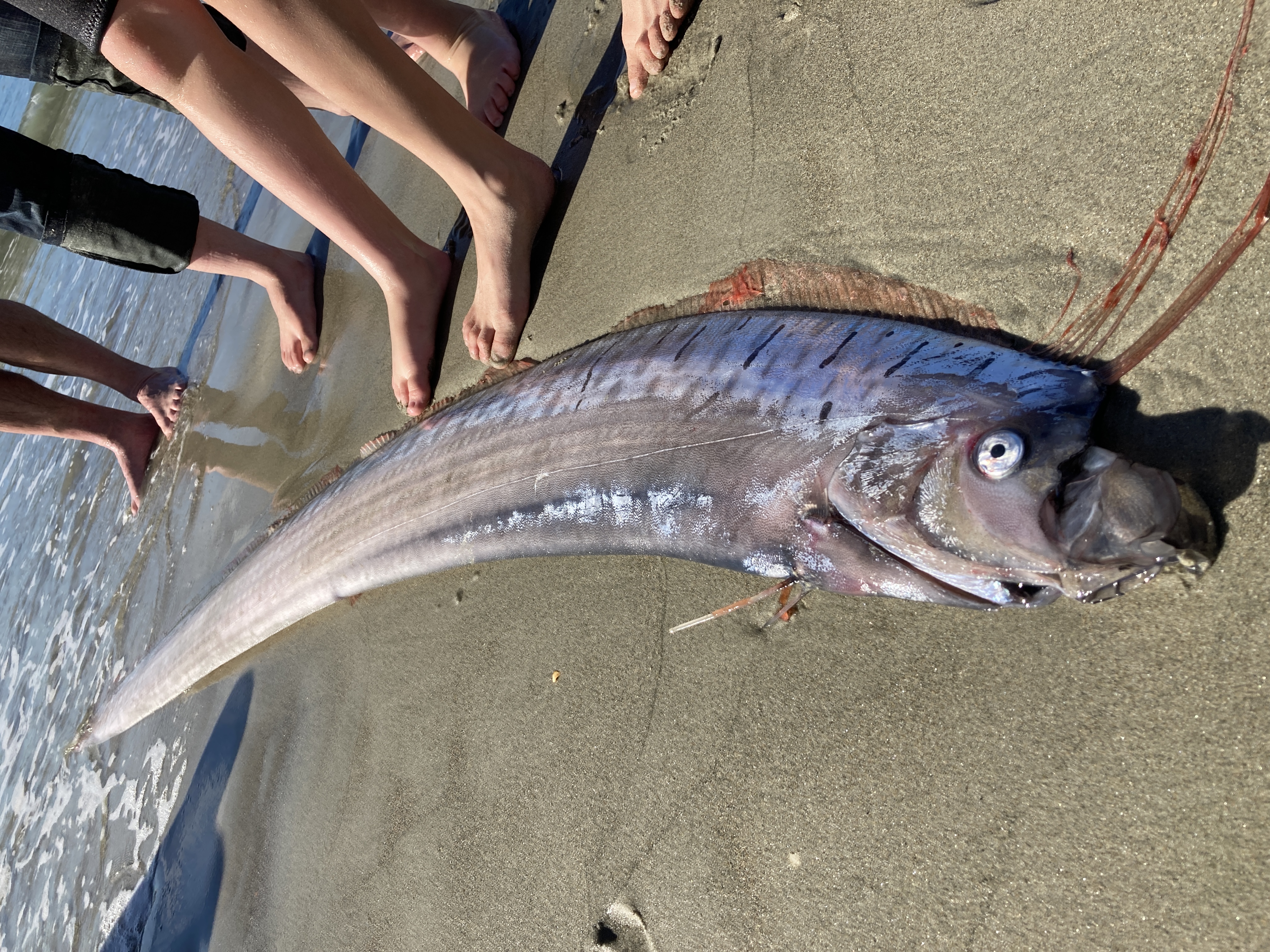Bridie Allan is lording it over her fellow marine scientists at the University of Otago after coming face to face with a ‘‘sea serpent’’.
A juvenile serpent, otherwise known as a rarely-seen oarfish, washed up on the beach at Aramoana at the weekend and Dr Allan was there when it was discovered by beach-goer Isaac Williams.
It was something even the most experienced of marine scientists rarely encounter, she said.

‘‘Isaac was fossicking around in the water and came across it. As soon as I saw it, I knew that it was an oarfish.
‘‘It was awesome.’’
The greatly elongated, pelagic lampriform fish was 3.6m long, and while it may seem large, it was just a juvenile.

She said they could grow up to 8m long and were the longest bony fish alive.
They generally live between 200m and 1000m below the surface, feeding on zooplankton, and are rarely seen on the surface.
Occasionally they become beached after storms or linger on the surface when sick or dying, making them a probable source of many sea serpent tales in the past.

‘‘It was still alive but it was clearly distressed and dying.
‘‘We tried to put it back out in the water to see if it would swim off, but it just floated on the surface. Apparently that’s what they do when they are sick or dying.’’
Unfortunately the oarfish was found again later, further down the beach, broken in two.
She said her only regret was not keeping it for study or display at a museum.
‘‘I’m sort of kicking myself for not grabbing it.
‘‘There’s only been a handful of reported sightings around New Zealand, including one here in 2015. They’re really rare.
‘‘It was quite exciting to see. Right place, right time, eh?’’












